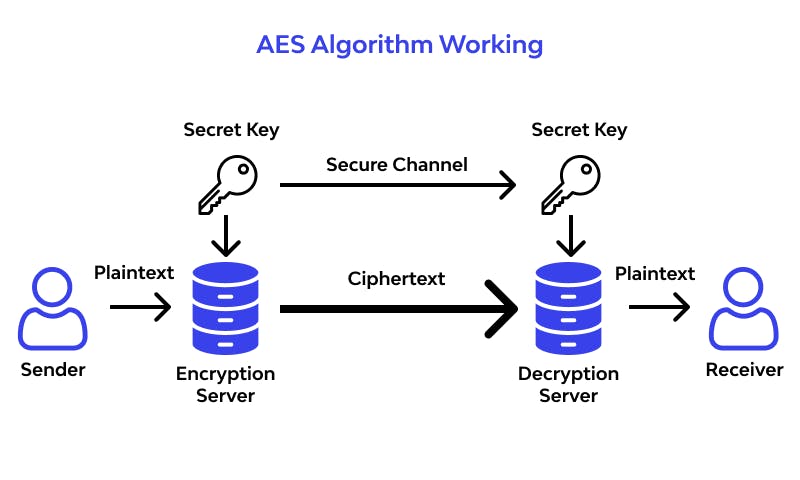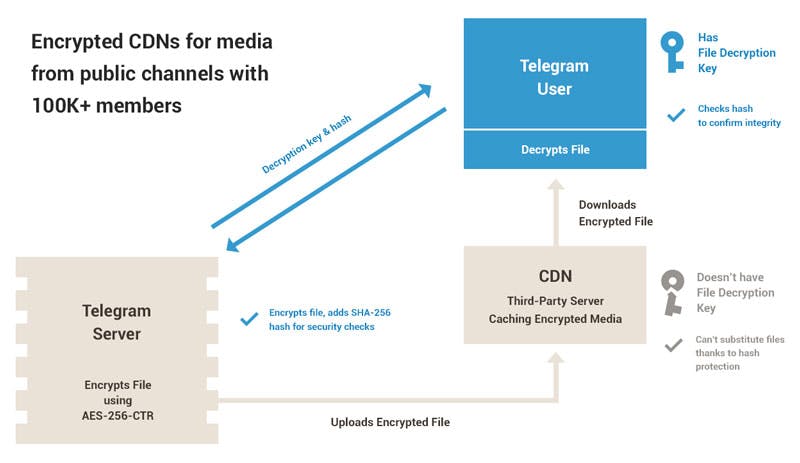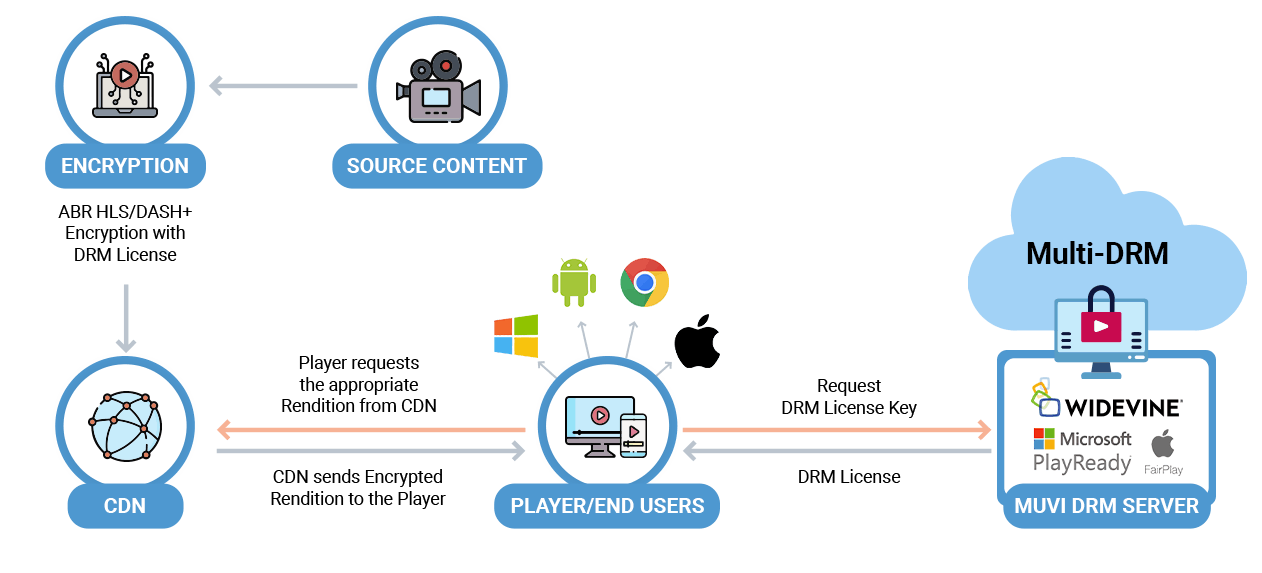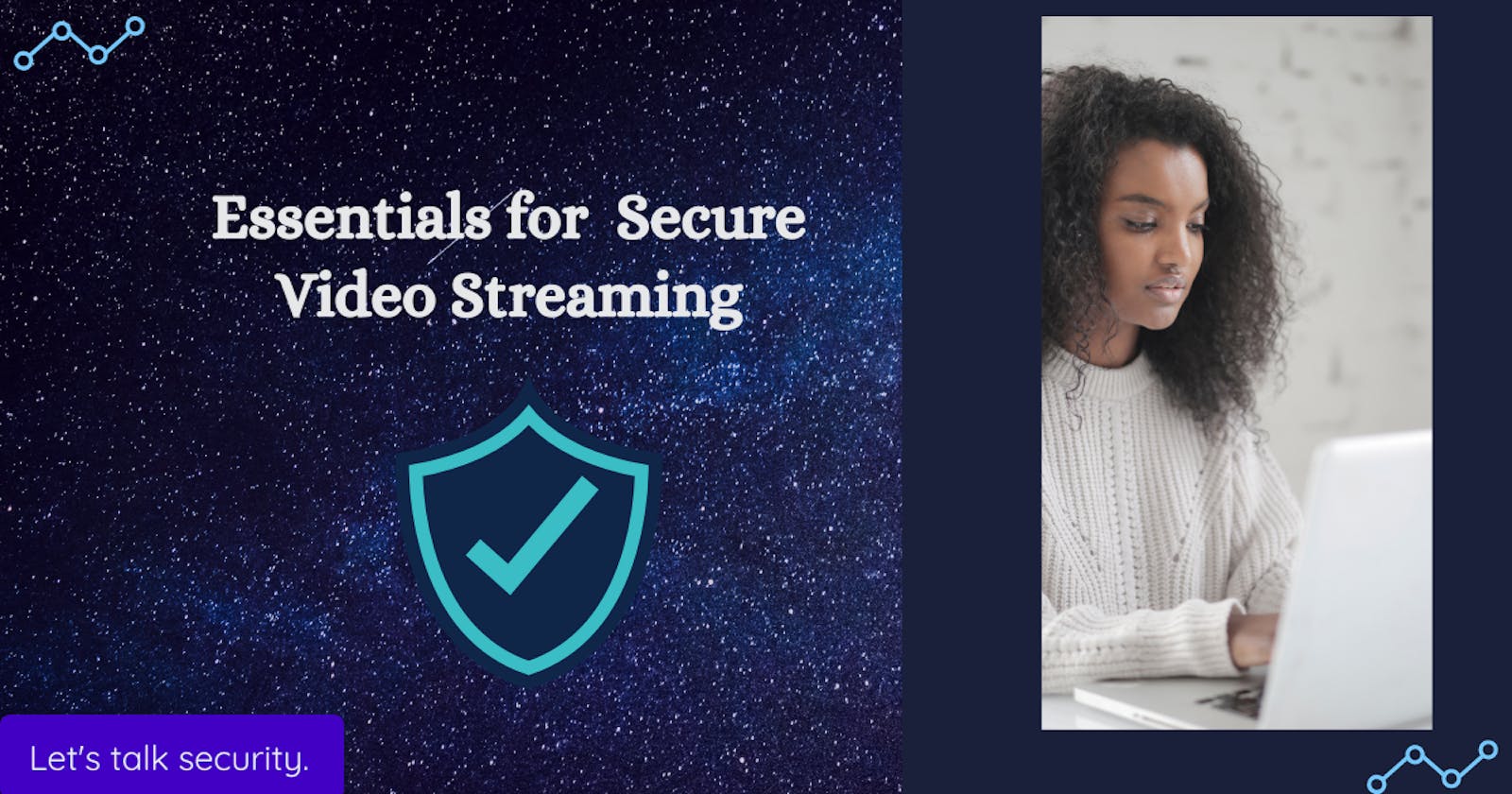Introduction
A key part of live streaming security is keeping your live broadcasts from being shared without your permission, from data breaches, and other security problems.
Read on to find out how to protect your live streaming app, website, and live feeds from these security risks. This article will tell you everything you need about safe live streaming.

AES Encryption
First, we'll talk about the Advanced Encryption Standard (AES), which is a way to keep video streaming safe.
Advanced Encryption Standard (AES) is the technology that encodes data so that only authorized users can see sensitive information you've stored.
Using the AES standard to encrypt your data guarantees it is safe. The AES protocol encrypts each data stream with a unique cryptographic key to keep the data safe. For people to see the content, they must have the right digital access key.
AES and a unique key are used to encrypt each video stream. People will need the right digital access key to see the content.
They give you a lot of ways to get this key, like watching the movie on a trusted website or signing up before you can watch the videos. To see it, you need a web browser and an HTTPS connection.
In other words, AES makes it a lot harder for hackers to get to video data that has been recorded. If a hacker can intercept a secure AES-encrypted video transmission, they won't be able to see the movie.

HTTPS Delivery
HTTPS protects against all kinds of attacks that an "intermediary starts." It's important to note that these attacks often involve streaming video, especially when people access the information over open networks in places like schools, libraries, and other public places where people gather.
Hackers use these holes to steal information from networks that anyone can use, which is then sent quickly to the viewer.
Hackers often take advantage of these flaws. HTTPS distribution uses HLS encryption to protect users' connection to the website they are viewing from malware attacks. Using encryption keys and digital certificates makes this possible.
Because of how the HTTPS protocol works, all connections between the person watching the movie and the server that holds the movie can be encrypted. It makes sure that your material is safe.
HTTPS video distribution is one of the best ways to keep online videos safe and easy to set up.
SSTL / Encrypted Paywall
You could put up a barrier to stop people from watching live-streaming content that costs money. For encrypting the barrier, SSL and TLS are very important. A paywall is a good example of this method.
SSL, "Secure Sockets Layer," is a way to keep information on the Internet safe. So, all communications between servers and users of a live stream are encrypted.
Transport Layer Security, a well-known encryption method, protects your live Internet broadcasts. So, the whole process of communicating is safe. Even though TLS has mostly replaced SSL, most businesses still use SSL.
Password Protected video
A live streaming service that requires a password is a great way to keep people who don't know how to use it from getting to your data.
The password-protected video works the way it should. To start, choose the movies you want to protect with a password.
After that, you must type in the right password to keep watching. To watch the movie, you need to know the password.
Password protection is a quick and effective way to keep things safe. It works well for customer surveys, internal company use, preview videos, and other similar things.
It's also important to know that this is not the only way to stop an attack. Depending on how big your company is, online forums can see the passwords for your brand.
Because of this, many broadcasters change their passwords to hide the fact that they have limited access.
Streaming video that requires a password is a good way to keep your content safe, especially when used with other security measures.

Geographic Restrictions
You can limit who can see your sensitive data based on their IP address or physical location. It can be done in person or on the Internet.
Remember that this could stop some authorized users from seeing your work. It could make it harder for real people to use your website.
Everyone knows that some parts of the world have much more trouble with piracy than others. Data shows that the list of high-risk zones kept by the office of the US Trade Representative has more than thirty countries on it.
The technique also makes use of geo-blocking. Geo-blocking helps keep a video streaming service safe by limiting access from certain parts of the world.

Refer Restrictions
Referrer restrictions can be implemented to stop people from illegally watching your videos. They work by adding certain domains to a "whitelist," which could include your website and any affiliate sites you have access to.
When you use this feature, it will check with the server every so often to make sure that the systems that control digital security tokens are still working as expected.
It will stop playing immediately if it finds out the video has been posted to a site that is against the law. No matter how hard you try, you can't put the chosen video on another website.
Secure Data Centers and CDN
As a content provider, you should be able to send submitted films to an online video platform with delivery-level security across all data centers and content delivery networks.
A sophisticated software-based content delivery network (CDN) is used to stream video. This network spreads out the load and keeps it safe.
It makes it possible for the network to quickly send video and other kinds of data worldwide.
A video platform and a content delivery network (CDN) can protect your assets from a wide range of attacks. Most of them are distributed denial-of-service attacks, which try to shut down websites by sending too much traffic to them.
One attack loses all of its value by focusing on data transfer. They also have built-in redundancy, ensuring that all content is safe and that pages load quickly.

Multi-DRM Security
Digital Rights Management, or DRM, must be part of your live streaming platform if you want to protect the copyrights of your digital assets and ensure your live streaming is always on.
Multi-DRM security protects against all possible digital copyright violations and hacking risks. Choose a live streaming platform provider that offers multiple DRM levels, such as Play ready, Fairplay, Widevine, and Marlin.

Watermarking and Screen Record Security
You must turn on screen record protection and watermarking if you don't want people to share and watch your movies without permission.
Screen recording protection turns off the display and stops everything on the screen so that users can't record live-streaming content.
You can add a watermark to your live broadcasts with the watermarking tool. Depending on your live streaming platform, this watermark could have the customer's name, IP address, or email address.
Conclusion
Your live streaming platform must follow strict security rules regardless of your business or industry. These safety measures must protect sensitive client data, your live streaming platform, and live feeds.
Bonus
The article recommends the Dacast streaming platform for your videos.
Dacast is a unified streaming solution with several features geared toward professionals. Both live streaming and video-on-demand can be done on our platform.
This platform is for broadcasters who work in offices, schools, and other professional settings.
Dacast offers live streaming and video hosting services on the Internet. Users can put videos on their websites, but they still have editorial control over the content.
Dacast gives its clients a paywall, password-protected video hosting, a limit on who can send people to their site, and an analytics dashboard.
Thanks for your time!

